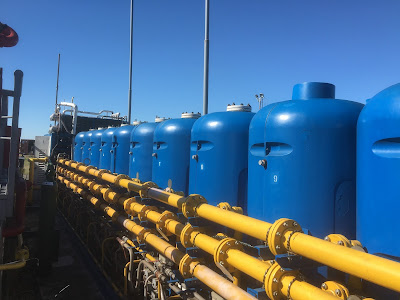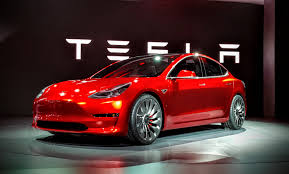Biogas Industry – 2017 Overview
We wish you a great year in the natural
gas industry. While we write, oil prices have gone up to $53 and we see a
consistent tren upward. In our first newsletter of 2017 we have decided to
discuss the Biogas industry which has shown great growing potential. We see more investments in bio-digesters across
the Country and several State governments are encouraging private investments in renewable energy.
The food processing
industry has the opportunity to convert its waste into energy, towns can have
their food waste, green waste and septic tank sludge treated by locally rather
than having to sent it for disposal.
We are big producers of waste and the
Biogas industry can help converting waste into clean energy; bio digesters
generate raw biogas with a content of methane ranging from 50% to 75%.
Verdek Biogas Solutions
Verdek offers integrated solutions for
Biogas treatment. The flowchart below shows the steps that the raw gas follows from
the bio-digester. Our solution
efficiently resolves the challenge of cleaning the raw biogas, it requires a
small footprint and feature a modular
design for easy installation and organic growth.
Raw Gas Treatment
Galileo ZTPS treatment modules process
the raw gas and separate the RNG (renewable natural gas) which can be used in a
variety of applications such as fuel for transportation or energy generation. The
waste gas is further processed to extract beverage grade CO2. Depending on the
location we can offer a variety of handling solutions for RNG produced by the
digester.
Galileo ZTPS – Raw Gas Treatment Plant
Pipeline Injection
The gas produced by the treatment plant
is pipeline grade and it can be injected into a pipeline at the digester site
or at a remote location. Our Galileo equipment is capable or regulating the
injection pressure required by the pipeline.
If there is no pipeline on site there are various options that we can
offer to handle the gas depending on the final utilization.
Natural Gas Compression (CNG) or Liquefaction (LNG)
We determine the most appropriate way to
treat the gas based on its total volume and the distance from its final
utilization. For distances under 200-250 miles, generally it is more convenient
to produce CNG. For distances over 250 miles it is better to consider producing
LNG.
CNG production
Depending on the volume to be treated we
offer a full range of compressors with flow rates from 0.5 to 20+ GGE/min. The Nanobox,
the Microbox and the Gigabox compressors are totally integrated and can be
installed on a small footprint. They are placed on a concrete pad and they can
be quickly set up after connecting them to the power supply and the gas lines.
The modularity of these units allows an organic growth and a continuous and
rapid alignment of gas production and processing capacity. The unique design of
all our equipment allows a quick relocation if the project requires it.
Galileo Microbox
LNG Production
If the specific project requires the
liquefaction of the natural gas produced by the digester, the Cryobox is the
most versatile solution. One unit can produce 10,000 Gallons of LNG/day. Like
for the Microbox and Gigabox the Cryobox can offer modularity and flexibility.
It can be easily moved to a different location when required.
Galileo Cryobox
Virtual Pipeline CNG
Once the CNG or LNG is produced we can transport
it with our Virtual Pipeline, the most effective solution to move the gas to
final location. The MATs are designed to hold various quantities: 430 GGE, 700 GGE,
1,800 GGE of gas at 3,600 psi. If the gas will be used at the final site for
fueling vehicles we can add the MAT B and our HPU to deliver fuel at 3,600 psi.
Galileo MAT and MAT B (with booster)
Galileo MAT B and HPU for Direct Fueling
Virtual Pipeline LNG
We move LNG to the final location on ISO
tanks. It will be ready for various usage; as it is for fueling or it will be gasified
for transportation or energy generation.
ISO Tanks
Patagonia - LNG and L-CNG Fueling
If the purpose of the LNG is fueling,
the LNG can be stored in our Patagonia which offers, storage and dispenser features
for LNG and L-CNG on demand. This solution allows the install a natural gas fueling
station where no gas lines are available at the site. It requires a small
footprint and min energy to store the LNG with no boil-off.
Galileo Patagonia
Power Generation
We can provide the appropriate pressure
regulators (PRP) to provide the required gas pressure for GenSets or at the
city gate of a town gas lines.
Galileo PRP – Pressure Regulator
Power Generation
Natural gas is a clean fuel. With the
increased availability of large CNG engines, natural gas has become the clean solution
for power generation. For the past 20 year Galileo has been offering Virtual
Pipeline solutions in major mining operations in isolated locations away from
power sources.
Triton Mining Operation – Natural Gas Gensets
Waste Gas Treatment
The waste gas coming from the ZTPS raw gas treatment
can be further treated for the extraction of the CO2. The Pentair process is
capable of producing beverage grade CO2 with a purity of 99.9%. It is a modular
solution that adds value to the biogas treatment and it increase its return on
investment.
Pentair CO2 Extraction Module





























